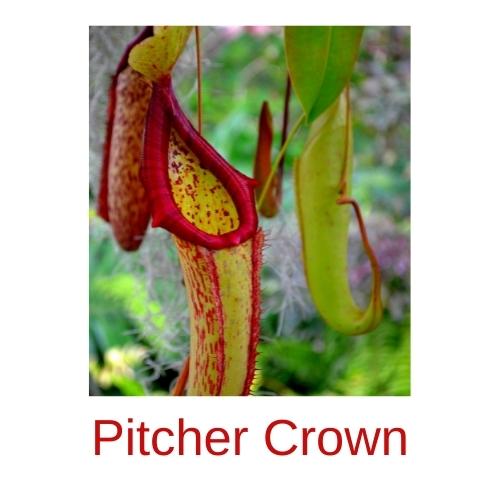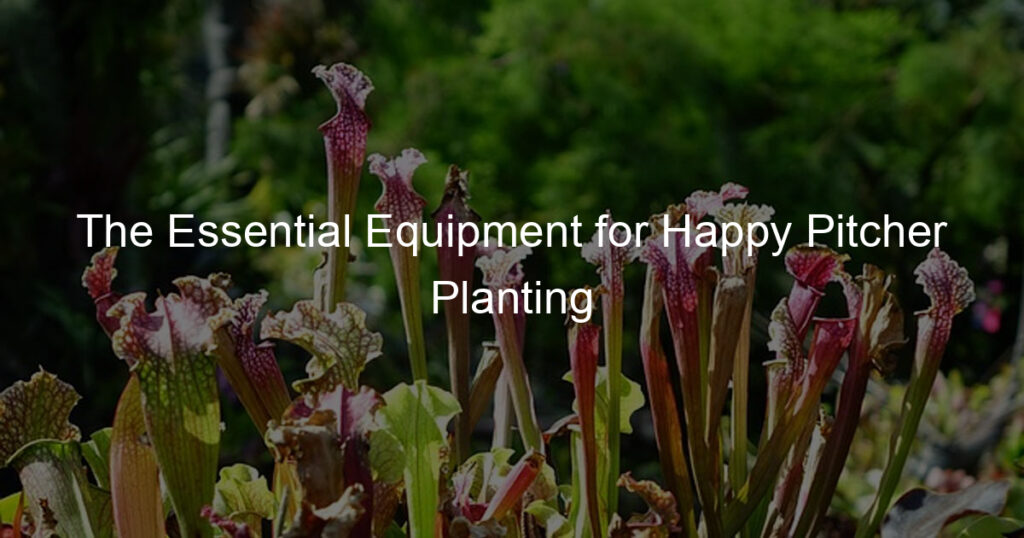If you’re an avid lover of pitcher plants, then you know the joy that comes with growing these fascinating and beautiful species. Pitcher plants require a little extra TLC compared to other houseplants, but having the right equipment on hand can make all the difference in ensuring their long-term success and health. In this blog post, we’ll cover the essentials for making your pitcher plant dreams come true – from potting them up in a special soil mix to choosing the perfect lighting setup.
What do I need for a pitcher plant?
Growing a pitcher plant doesn’t have to be a daunting task. All you need is some basic supplies and information, and you’ll be on your way to having a gorgeous specimen at home! First off, you’ll need a pot and soil suited for carnivorous plants, along with the actual pitcher plant seeds or cuttings.
You must provide moist, acidic soil with good drainage in a warm environment. If you’re confident about your green thumb, why not choose some moss for the top of your pot as well? You will also need rainwater or distilled water for best results – never tap water!
Last but not least, look into providing your pitcher plant with organic insect prey every once in a while to keep it healthy and strong. With this shopping list, there’s no doubt that you can create the perfect home for your pitcher plant!
How do I make my pitcher plant happy?
Taking care of a pitcher plant can be incredibly rewarding. To make sure that your pitcher plants remain healthy and happy, provide them with the natural habitat they favor: indirect light, warm temperatures, and a high-humidity environment.
It is also important to feed your pitcher plants correctly by adding live insects; this will give them the nutrition they need. Allowing some moisture to remain in their pots and frequent misting with distilled water will keep their soil hydrated while also providing additional humidity in their environment.
Lastly, as pitcher plants are slow growers meaning it’s best to refrain from disturbing or repotting them unless necessary. With your help, they will become one of the most beautiful additions to any home garden!
What pots are best for pitcher plants?
When it comes to choosing pots for pitcher plants, there is a lot to consider. For starters, it needs to have ample drainage holes that are large enough so the water flows through them easily. Make sure no debris gets in the bottom of the pot or plugs up any drainage. Also, it should be lightweight yet durable because pitcher plants can take up quite a bit of space over time.
Broad and shallow wide-spread pots are also great as they allow us to get a closer look at the plant’s features such as its colorful jaws. Ultimately, you want something that gives your plant enough room to grow while still providing easy maintenance and protection against diseases like root rot.
What is the best substrate for pitcher plants?
The best substrate to use when growing pitcher plants is a combination of sphagnum moss and horticultural charcoal. This combination gives the pitcher plant a perfect balance of drainage, air circulation, and water-holding capacity to help it flourish.
By using this mixture over something like potting soil or peat moss, our beloved carnivorous plants can get everything they need to thrive in their natural environment. Additionally, with an optimal substrate balance as provided by this mix, pitcher plants are less likely to experience stress from weather fluctuations or any other environmental issues.
What soil is used for pitcher plants?
Pitcher plants are some of the most unique and interesting plants out there, and you may be wondering what type of soil they need to thrive. The answer is very specific – they require a special type of peat-based soil that is low in minerals and high in organic matter. This soil helps the plant to capture nutrients by creating nutritious pools of water deep within its pitcher-shaped leaves.
Additionally, it helps to properly absorb water during times when regular water is scarce due to droughts or other environmental factors. When choosing soil for your pitcher plant, make sure it has all of these key characteristics so that your new friend will have the nutrition and hydration it needs!
Do pitcher plants need deep pots?
Pitcher plants can add a unique aesthetic to any indoor or outdoor space, and they don’t necessarily need deep pots to flourish. Shallow pots are often preferable for pitcher plants since too much potting soil allows them to become overly moist and encourages root rot.
It’s important to keep the soil moist but not wet since too much water can suffocate the roots, so having adequate drainage at the bottom of their pots is essential. Providing proper drainage and ensuring that their soil is well-draining can help pitcher plants stay healthy, no matter how deep their pots may be.
Conclusion
Pitcher Plants can be a beautiful and intriguing addition to any garden. They can also provide valuable insights into biogeography, ecology, and evolutionary biology! With careful consideration as to the location and other requirements for pitcher plants, you can ensure that your beautiful pitfall traps will live a happy and healthy life. Overall, careful selection of the appropriate equipment to meet their needs goes a long way in caring for pitcher plants. A grow light, humidity gauge, and insect traps are essential components in creating an ideal environment for not only the pitcher plant but other carnivorous plants as well.








